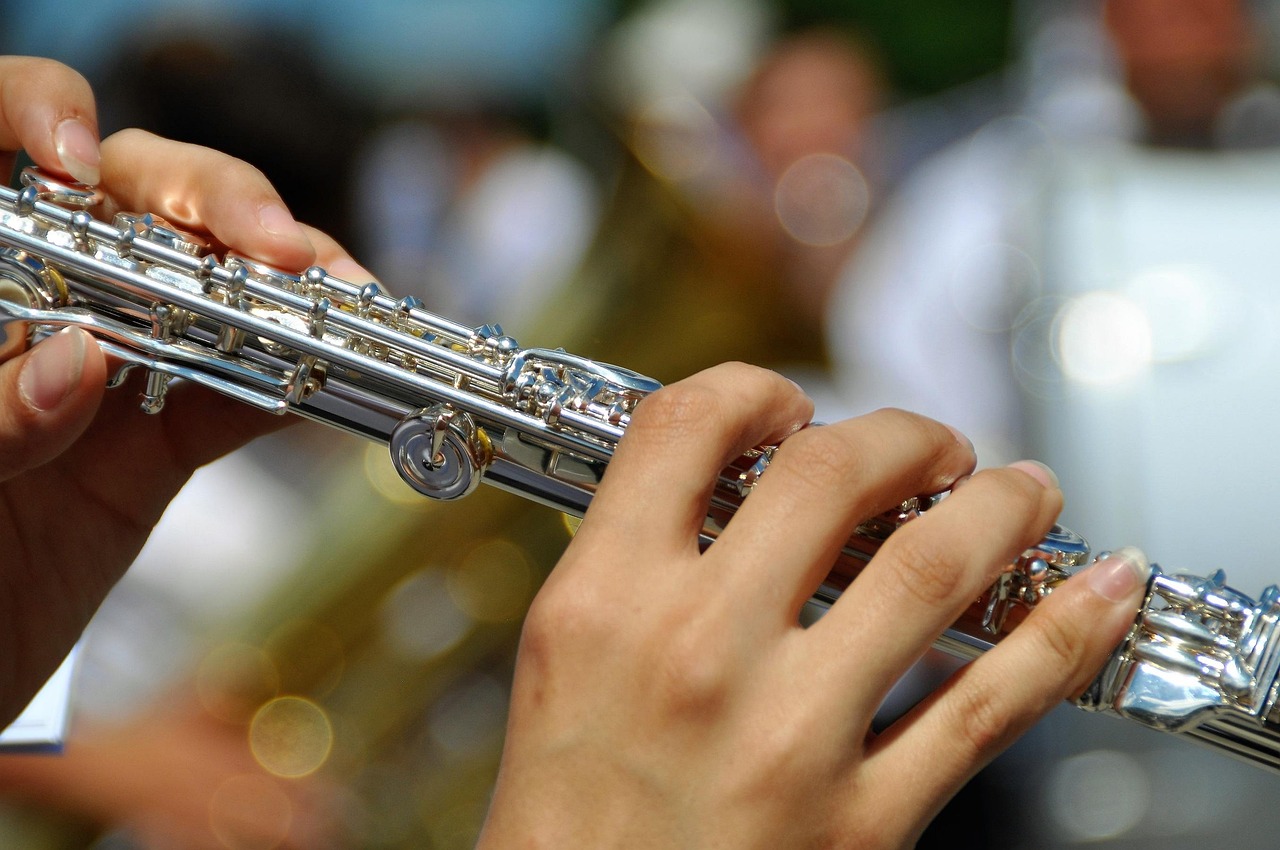The flute’s bright, lyrical tone makes it a favorite for beginners in school bands, orchestras, and solo performances. With Amazon offering flutes as low as $100, it’s tempting to snag a bargain, especially for first-time buyers. However, we’ve done the research – based on user reviews, reports from Reddit and other websites, many of these affordable options may be knockoffs from low-quality brands that sacrifice sound, durability, and playability. Poorly made flutes can frustrate learners, hinder progress, and lead to costly repairs or replacements. This article highlights flute brands to avoid, red flags for spotting poor quality flutes, and tips for selecting a reliable instrument to ensure a rewarding musical experience.
For a list of flutes we’d recommend, check out our article Best Beginner Flutes: A Comprehensive Guide for New Flutists.
Table of Contents
Why Avoiding Low-Quality Flute Brands Matters

While listings like above can be tempting, buyer beware.
A flute is a precision instrument requiring high-quality materials like nickel-silver or sterling silver and meticulous craftsmanship. Low-quality flutes often use cheap alloys like cupronickel, which corrode quickly, or plastic components that produce a thin, airy tone. Misaligned keys, leaky pads, and fragile joints make playing difficult, especially for beginners mastering embouchure and finger technique. These issues can discourage students and render many knockoffs unrepairable, as technicians often refuse to service them due to shoddy construction. Investing in a reputable brand, even a used one, ensures better sound, durability, and resale value, saving time and money while supporting musical growth.
Flute Brands to Avoid
Several brands consistently appear in expert warnings and user reviews for their poor quality, particularly on Amazon, where they target budget-conscious buyers. Here are five brands to steer clear of:
- Eastar: Priced under $150, Eastar flutes use cupronickel, a cheap alloy that wears quickly and produces a dull tone. Their key mechanisms are prone to misalignment, and pads degrade rapidly, causing leaks. Reviews highlight frequent key sticking and poor intonation, making them unsuitable for serious students.
- Mendini by Cecilio: Marketed as beginner-friendly, Mendini flutes (around $100–$200) suffer from flimsy joints and inconsistent tone quality. Their thin metal construction dents easily, and many users report flutes breaking within months. Repair technicians often avoid them due to their fragility.
- Lazarro: Lazarro flutes, often in bright colors to attract novices, use low-grade materials and lack precision in keywork. Their “professional” claims are misleading, as they deliver poor tone and intonation. The included accessories, like cleaning rods, are substandard, adding no value.
- Glory: Glory flutes are notorious for brittle construction and airy sound. Made with inferior metals, they dent easily, and their key mechanisms are unreliable. Users report pads falling apart after minimal use, rendering the flute unplayable without costly repairs.
- Herche: Despite claims of quality, Herche flutes use substandard materials and lack tonal depth. Their Amazon listings exaggerate features, but reviews note issues like loose joints and uneven sound, making them a poor choice for students.
These brands dominate Amazon’s low-price listings, often with inflated claims like “professional-grade” or “teacher-approved” that lack credible backing. Avoiding them is essential to ensure a flute supports a player’s development rather than hindering it.
Red Flags for Identifying Poor Quality Flutes
Amazon’s marketplace can contain some brands that we’d steer clear from. Here are key red flags to watch for when shopping online:
- Suspiciously Low Prices: Flutes under $300 are often too good to be true. Quality student flutes from brands like Yamaha or Gemeinhardt start around $500–$1,000, reflecting the cost of durable materials and precise assembly. A $100 flute likely uses cheap alloys or plastic, leading to poor sound and frequent breakdowns.
- Unknown or Generic Brand Names: Listings without a clear brand or from generic sellers (e.g., “Cadway,” “POGOLAB”) are suspect. Reputable brands like Yamaha, Pearl, or Jupiter prominently display their names. No-name flutes are typically mass-produced with minimal quality control.
- Exaggerated Claims: Beware of terms like “professional” or “band-approved” without evidence. Legitimate brands rely on reputation, not hype. Check if the flute is sold by reputable retailers like FluteWorld; if not, it’s likely a knockoff.
- Unusual Materials or Colors: Flutes in bright colors (e.g., pink, blue) or made with cupronickel instead of nickel-silver are often low-quality. Colored plating wears off quickly, and cupronickel compromises tone and durability.
- Low-Quality Accessories: Knockoff listings often include flimsy cases or unnecessary items like joint grease (not needed for flutes). These add-ons are rarely durable and mask the instrument’s poor quality.
- Long Shipping Times: Listings with weeks-long shipping suggest the flute is sourced from overseas warehouses with little quality oversight. Poor storage conditions can damage the instrument before delivery.
Recognizing these warning signs helps you avoid wasting money on flutes that fail to meet performance standards.
Tips for Choosing a Quality Flute
To ensure you purchase a reliable flute, consider these strategies:
- Choose Reputable Brands: Opt for trusted brands like Yamaha, Gemeinhardt, Pearl, Jupiter, or Trevor James. Yamaha’s YFL-222 and Gemeinhardt’s 2SP are excellent beginner models with silver-plated nickel-silver bodies, closed-hole keys, and reliable intonation, priced around $500–$1,000. These brands are educator-approved and retain resale value.
- Buy from Authorized Retailers: Shop from reputable dealers like FluteWorld, Flute Center of New York, or Carolyn Nussbaum Company, even on Amazon. These sellers ensure authenticity and offer warranties, unlike generic Amazon vendors.
- Explore Used or Rental Options: Renting a flute from a music store ($25–$35/month) lets beginners try the instrument affordably. Used flutes from reputable brands, like pre-2010 Yamahas or Jupiters, cost $200–$500 and are durable if inspected by a technician.
- Test Before Buying: If possible, have the student test the flute for tone and comfort. Renting or borrowing from a music store for a few months helps identify preferences before committing.
- Verify Reviews and Sellers: Read Amazon reviews from verified buyers, prioritizing feedback from educators or experienced players. Check the seller’s reputation and avoid listings with sparse or overly positive reviews that seem suspicious.
For a list of flutes we’d recommend, check out our article Best Beginner Flutes: A Comprehensive Guide for New Flutists.
Conclusion
Selecting a flute is an exciting step, but poor-quality flutes can turn enthusiasm into frustration. Brands like Eastar, Mendini, Lazarro, Glory, and Herche consistently produce subpar flutes with flimsy materials, unreliable mechanisms, and poor tone, making them flute brands to avoid. By watching for red flags—low prices, unknown brands, exaggerated claims, and cheap materials—buyers can steer clear of these pitfalls. Choosing reputable brands like Yamaha or Gemeinhardt, shopping from trusted retailers, and considering rentals or used options ensures a flute that supports learning and inspires progress. With careful research, you can find an instrument that sings beautifully and lasts for years.
Disclaimer: The opinions and claims made in this article are based on aggregated user reviews, musicians’ experiences, and publicly available information, not personal testing or endorsement of each brand or product. Brand assessments reflect commonly reported user experiences and should not be construed as definitive statements of product quality. Individual instruments may vary in quality and performance regardless of brand reputation.

